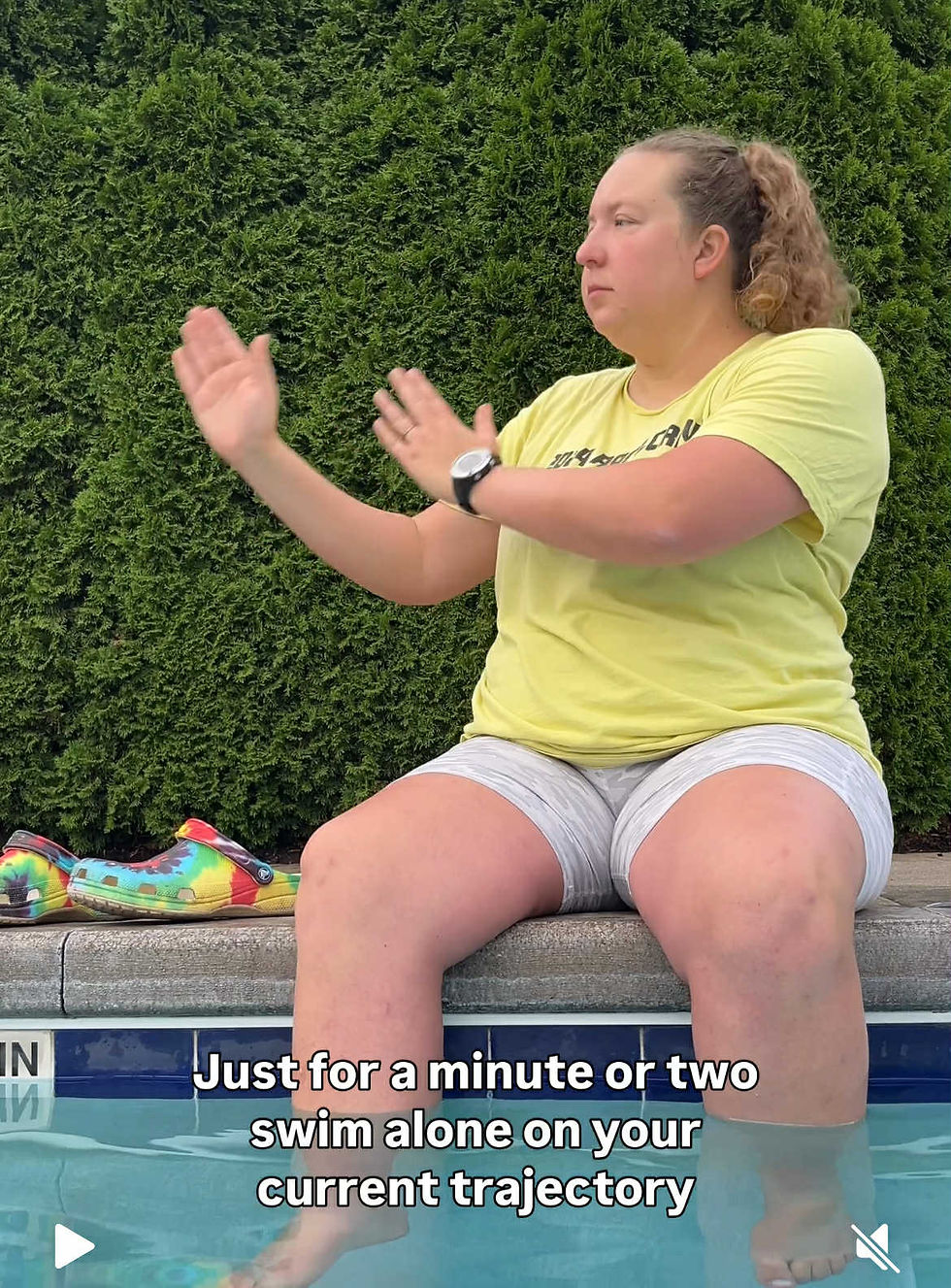Hand Signals for Crew-Swimmer Communication
- Daniela Klaz
- Aug 26
- 2 min read
Once a swimmer is in the water, it can be difficult to communicate with them (speaking from experience as a kayaker and a boat crew member). Here are some ideas on hand and body signals you can use to provide a visual cue to your swimmer. I highly recommend practicing these ahead of time so your swimmer knows what you look like making the gesture. All parties - swimmer, other crew members, boat pilot - should know and agree to use them when interacting with the swimmer. Just think of it this way, if your two crew members are fawning over a pod of dolphins, the captain may need to alert you to a buoy in front of you; explaining the hand signals to everyone on the boat can help you be safe and successful.
Basics:
Thumbs up = you're doing great!
Flexing an arm/doing a Pop Eye bicep curl = you're looking so strong!
Showing the feed bottles = feed is coming toward you just after I show this to you
Navigation:
Crossed arms overhead = stop immediately (due to unsafe environment or obstacle ahead)
Hand to forehead in profile = sight for yourself right now (to avoid an obstacle)
Fist closed and pushing outward = go around obstacle on the left
Fist closed and punching inward = go around obstacle on the right
Double handed wave forward in profile = keep your current trajectory and just keep going by yourself for the next few seconds/minutes
Hand pulling the air closer to crew member/boat = come closer to the boat
Both hands pushing air away from the crew member/boat = swim farther away from the boat
Both hands pointing at ears = I need you to listen right now (could be paired with the "stop immediately" signal)
As with any communication, try to keep everything super simple. Remember that a swimmer may not have their eyes focused on you right away, so if you don't see a response/correction, you may either need to keep making the signal, or move your position so you're within their eyeline during their breath. If the dark, you may need to pair hand signals with glow sticks or a red-colored head lamp to illuminate the crew member, boat, or hand signals in front of you without blinding the swimmer.
If the swimmer really isn't paying attention or refusing to listen, you may need to yell or use a whistle to get their attention. If your swimmer is being unsafe by blatantly disregarding all attempts at communication, you may need to start emergency action procedures and either change the boat position to assess the responsiveness of the swimmer or consider a medical cause, like hypothermia, electrolyte imbalance, or shock.















Comments